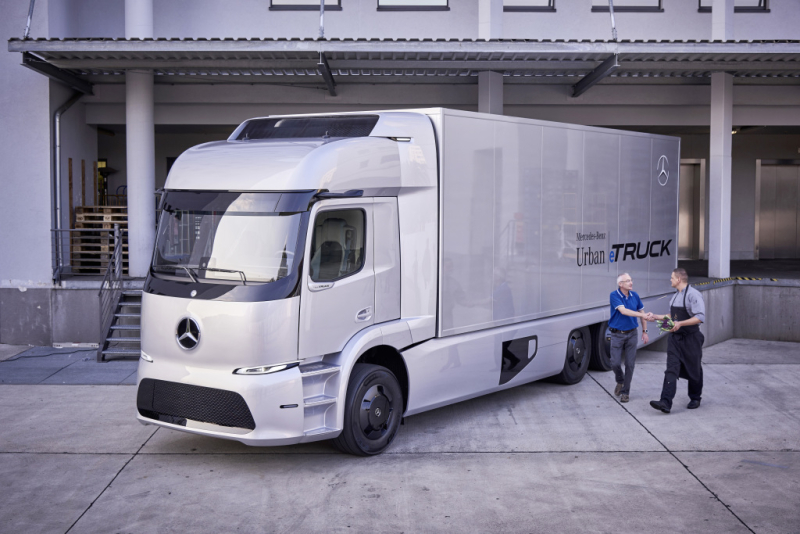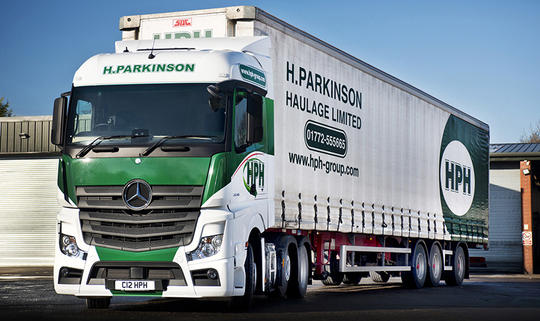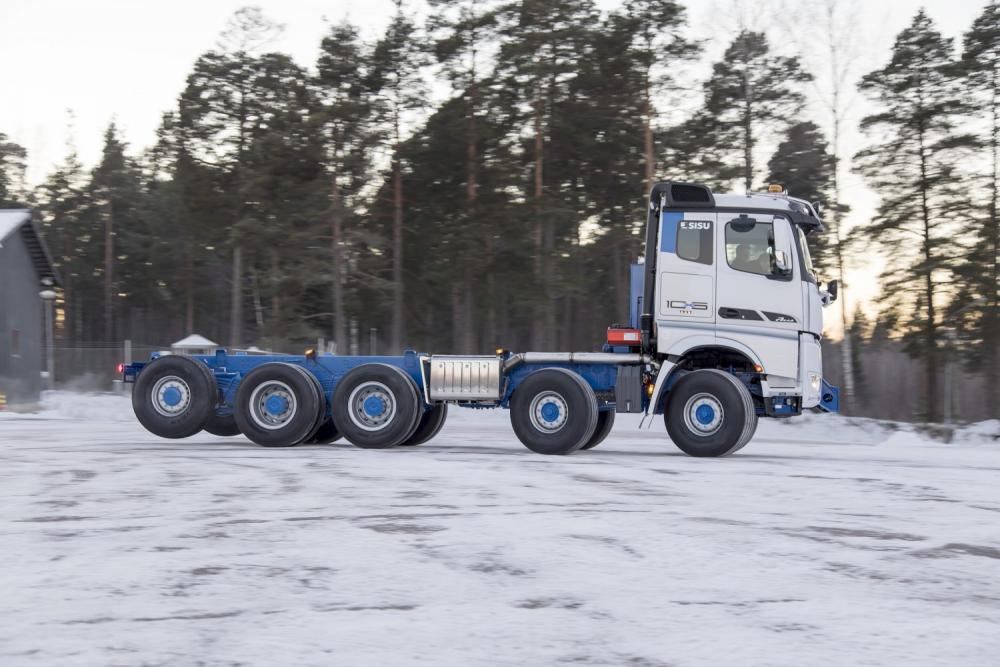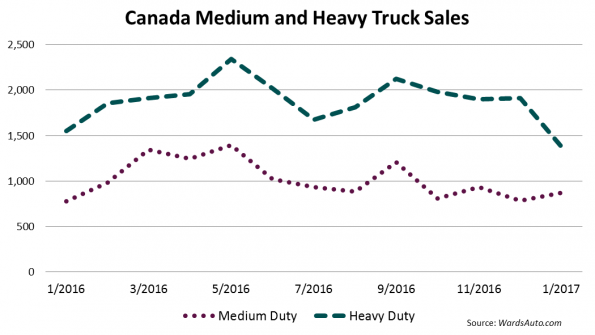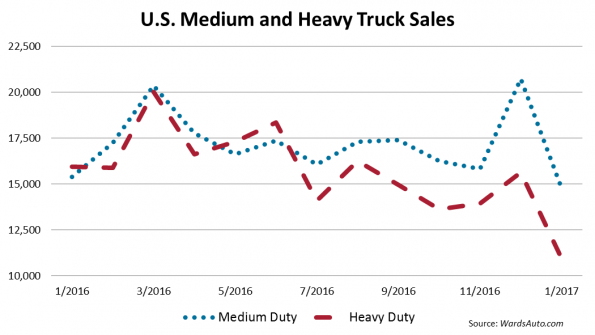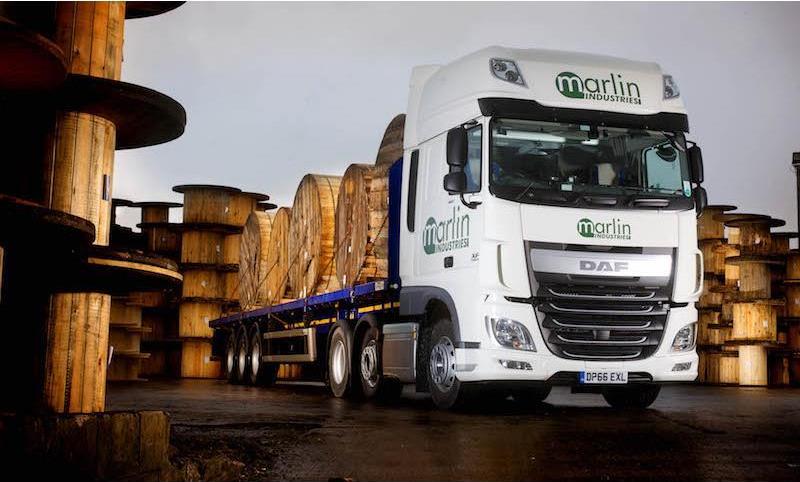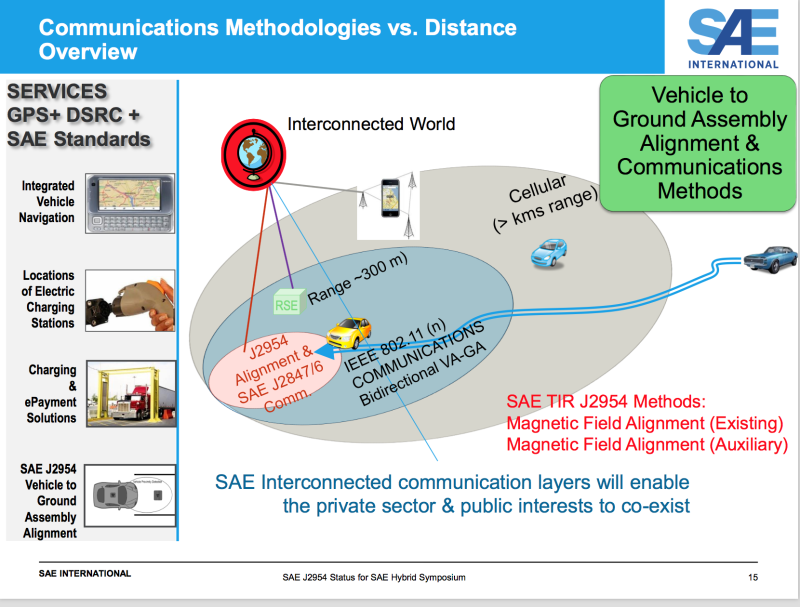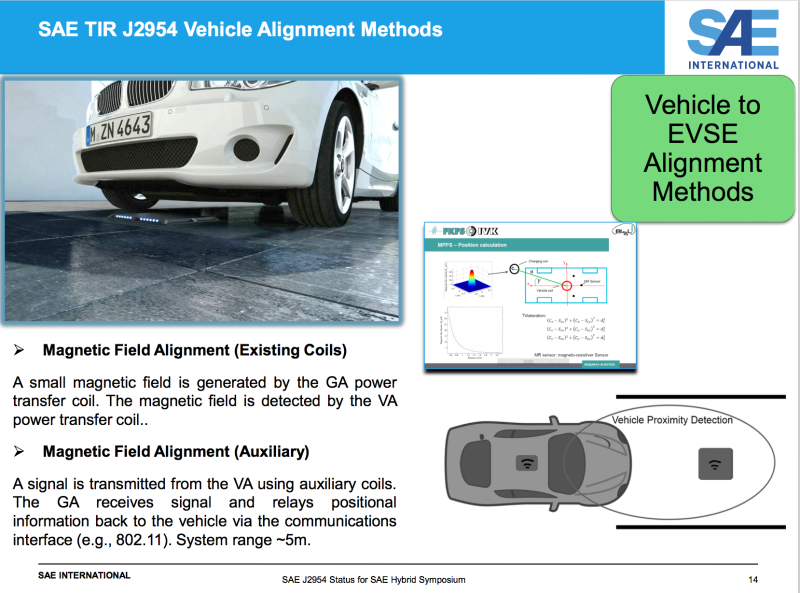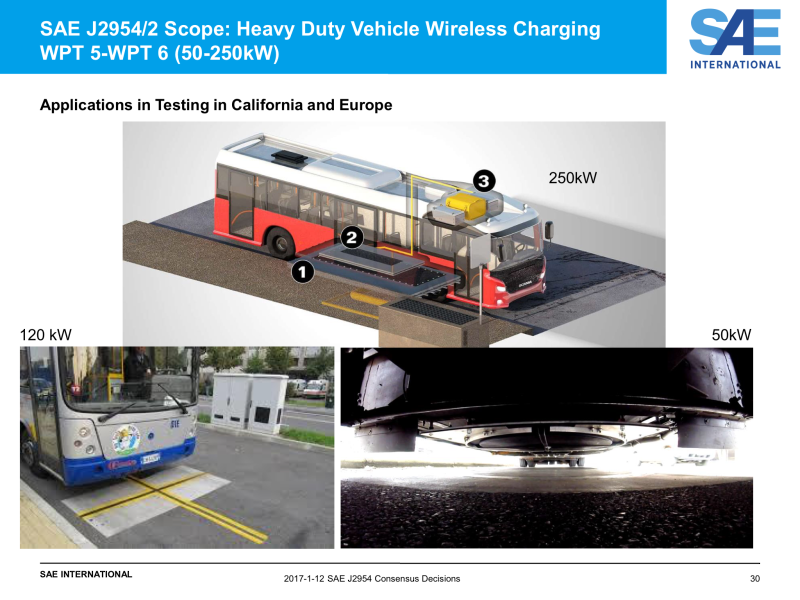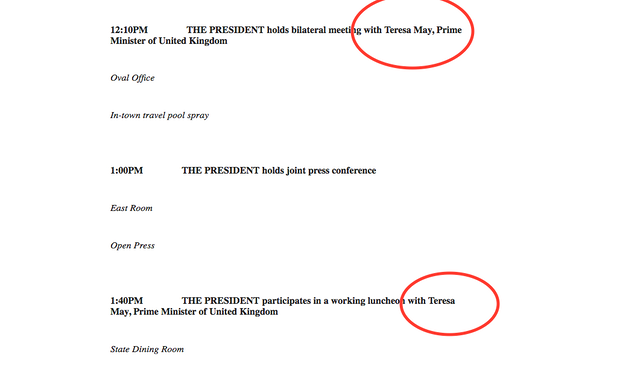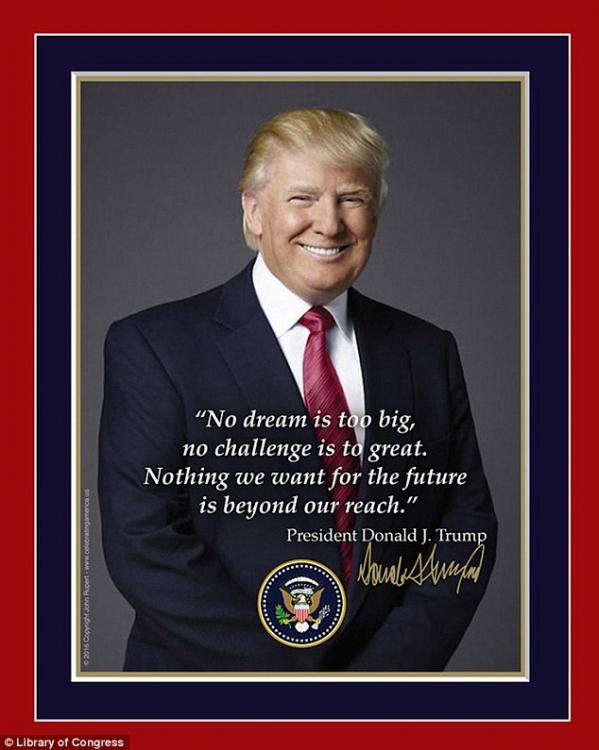
kscarbel2
Moderator-
Posts
18,920 -
Joined
-
Days Won
114
Content Type
Profiles
Forums
Gallery
Events
Blogs
BMT Wiki
Collections
Store
Everything posted by kscarbel2
-
Europe Doubles Down on Iran Deal as Trump Steps Away Bloomberg / February 15, 2017 Before the platters of roast lamb and fragrant rice were served, visiting executives squeezed into the front room of the Swedish ambassador’s home in Tehran to applaud ambitious plans to restore Iran as a top trade partner. The men and women representing companies including AstraZeneca Plc and truckmaker Scania AB had flown in with Prime Minister Stefan Lofven, who was making the first official visit to Iran by a Swedish premier since a mediation effort during the 1980s war with Iraq. The 75-member delegation was intent on doing business, but the politics was inescapable: as the U.S. under Donald Trump steps away from Iran, Europe’s moving forward, unwilling to throw away years of tortuous diplomacy. “Before sanctions, Iran was the biggest export market for Sweden in the Middle East,” Trade Minister Ann Linde said at the Feb. 11 event attended by Iranian businessmen and ministers. “We hope it will be again.” European leaders are emerging as strong backers of the 2015 six-nation nuclear deal with Iran, derided by Trump as one of history’s dumbest. They want their companies to prosper in a largely untapped market of 80 million people, but there’s a deeper motive -- to bolster the moderate politicians led by President Hassan Rouhani seen as the best bet for an Iran that’s freer at home and more willing to cooperate in defusing Mideast flashpoints. Russia, another signatory to the agreement, is a key ally of Iran. May Election “The Europeans want an administration in Iran that will stick to the deal and pursue a moderate engagement with Europe that has begun already,” says Ellie Geranmayeh, a policy fellow for the Middle East and North Africa program at the European Council for Foreign Relations. For a start, Rouhani, who broke Iran out of its isolation in 2013, faces a likely re-election fight in May with hardline opponents who are suspicious of closer ties with the West. The moderates merit support, said a senior Western diplomat in Tehran, who requested not to be named in line with protocol. To help achieve that, states try to show their business communities that Iran is a good market to enter, he said. The Swedish trade delegation was sandwiched between a high-level French political and commercial visit, led by Foreign Minister Jean-Marc Ayrault, and a Feb. 12 automobiles conference attended by senior executives from Peugeot, Citroen, Renault and Hyundai. “I’ve been to Iran 25 times in less than two years,” Jean-Christophe Quemard, Peugeot’s executive vice-president for the Middle East and Africa, told reporters when asked if his latest trip was in any way motivated by Trump’s policies. “What does this mean? Times have changed. You need to get used to seeing our faces in Tehran.” Bank Woes Sanctions imposed on Iran over its disputed nuclear program slashed its trade with Sweden by 90 percent to about 1 billion krona ($112 million) in 2012. Among the documents signed during Lofven’s visit was a 110-million euro pact between Scania and Iranian heavy-vehicle maker Oghab Afshan to produce 1,350 buses. Hamid Akbari, a member Oghab Afshan’s board, said the company was in talks with three Swedish lenders for financing. For Europeans turning up in Iran, pledging to boost business is the easy part. Delivering is harder, especially as sanctions not lifted under the 2015 accord -- primarily U.S. curbs punishing Tehran for its missile program and links to groups such as Hezbollah that America designates as terrorist -- continue to scare away major banks.
-
Green Car Congress / February 15, 2017 Mercedes-Benz Trucks is bringing its all-electric heavy-duty truck (earlier post) to market in a small series this year. Following the presentation of the Urban eTruck with 25 metric ton (55,116lb) GVW and a range of up to 200 km (124 miles) at the International Commercial Vehicle Show in 2016, the first vehicles will be delivered to customers this year. The electric truck is based on a three-axle truck, with the entire conventional drivetrain replaced by an electrically driven rear axle with electric motors directly adjacent to the wheel hubs. Maximum output is 2 x 125 kW (2 x 168hp), while the peak torque is 2 x 500 N·m. In combination with the gearing, the torque at the wheel reaches 11,000 N·m. The power is supplied by a battery pack consisting of three modules of lithium-ion batteries with a total capacity of 212 kWh. This results in a range of up to 200 km (124 miles)—normally enough for a typical day's delivery round. Depending on the desired range, the modular battery pack can be customized by adding or removing batteries. The Urban eTruck is connected to the charging station using the Europe-wide standardized Combined Charging System (CCS) Type 2 connector. With a charging power of 100 kW, the fully discharged batteries are charged to 100% in two to three hours. (The system will support up to 150 kW.) Following the world premiere in September 2016 at the International Commercial Vehicle Show, the customer reaction was outstanding. We are currently talking to around 20 potential customers from the disposal, foodstuffs and logistics sector. With the small series we are now rapidly taking the next step towards a series product. By 2020 we want to be on the market with the series generation. —Stefan Buchner, Head of Mercedes-Benz Trucks worldwide The vehicle will initially go in a low two-figure number of units to customers in Germany, and later in Europe too, Buchner said. The aim is to use actual application scenarios and requirement profiles together with the customer to further optimize the vehicle concept and the system configurations of the electric truck. The tests will include use in shift operation, charging times plus battery and range management. —Stefan Buchner In order to be able to depict the various application possibilities, 18- and 25-tonne models will be equipped with a refrigerated body, as a dry box body and as a platform vehicle. Together with a special charger which takes into account the increased demands on a truck, the vehicles will be handed over to the customers to use for a period of twelve months and supported by Mercedes-Benz Trucks road testing department. During this time the use profiles and areas of application will be recorded and the knowledge gained and expectations compared. The Urban eTruck is part of a comprehensive electric initiative from Daimler Trucks. The light-duty electric truck Fuso eCanter will be in use in a global small series in 2017. Around 150 vehicles will be handed over to selected customers in Europe, Japan and the US. Daimler Trucks is thus covering a wide application portfolio of electric trucks all over the world. Daimler Trucks is expecting the costs for the batteries of an all-electric truck to fall by a factor of 2.5 from 1997 to 2025— from €500/kWh to €200/kWh. At the same time the energy density of the available batteries in this period will rise by the same factor from 80 Wh/kg to 200 Wh/kg. .
-
An absolutely beautiful truck. I question though if it was built in 1981. The last year of FL/FS production was 1975. We sold a lot of raised roof F-models in the global market.
-
Transport Engineer / February 14, 2017 Preston-based haulier HPH has taken delivery of four Mercedes-Benz Actros vehicles – its first Mercedes trucks – after a month-long trial in which the Actros performed “exceptionally well” and outstripped two other marques on fuel efficiency. Supplied by dealer Ciceley Commercials, HPH’s new additions to its 60-strong fleet are the subject of a CharterWay contract hire agreement, which includes tyres, from Mercedes-Benz Financial Services. The Mercedes-Benz Fuel Challenger programme invites operators to put an Actros to work on their fleet, to compare diesel consumption with the best of their own vehicles. HPH picked a real-life, day and night application as the battleground for its month-long, three-way evaluation. Its new Actros have now been assigned to the same operation, hauling tissue products between Cumbria, Lancashire and North Wales. HPH’s general manager Steve Sugden said: “We’d been running trucks by the same manufacturer for some years but felt the time was now right to take a look at what the competition can offer. Having also seen and heard a number of reports about other operators making significant fuel savings with the Actros, we were particularly keen to see what the Mercedes-Benz truck could do. “While I prefer not to quote specific figures, it’s fair to say that Ciceley’s Actros demonstrator performed exceptionally well, its mpg returns putting it ahead of the competition by a clear margin.” Other factors in his decision were price and driver appeal, he adds, along with aftersales support from the dealer. Mercedes says the Actros has won 90% of the 310 fuel challenges completed since the first one in 2014, achieving average fuel savings of 7.5%. .
-
Sisu Trucks / January 16, 2017 The first heavy Sisu “Super Polar” 10x6, ordered by a global Austria-based mining company, was shipped to Germany on January 6 where a custom-built body will be mounted. Customer delivery will take place in February. The Sisu Polar 10x6, with a rated GVW of 45 metric tons, is built on the Sisu’s proven reinforced 460mm high frame. A tridem (three driving axles) suspension system has been specially developed to carry the large total weight and always distribute the load evenly on each axle, giving the truck greater towing capacity in extreme conditions. The drivetrain consists of a 625 horsepower Mercedes-Benz engine, 16-speed PowerShift 3 automated manual transmission (AMT) fitted with a Voith Turbo Retarder Clutch and reinforced Sisu axles. This Super Polar series is an important part of Sisu’s Polar line-up development program that covers the most demanding, truck-based products transportation solutions. .
-
Scania Group Press Release / February 14, 2017 The French capital is now taking active measures to phase out diesel cars, buses and trucks with a proposed total ban by 2025. The city has already banned diesel vehicles registered before 1997 from entering the city and recently extended the ban to vehicles registered before 2001. Paris has introduced a color-coded sticker scheme to bar these diesel-powered vehicles from entering the city centre. Parisian transporters are therefore actively seeking alternatives for vital services, such as goods deliveries and passenger transport. Franprix, a leading food retailer in the French capital, is presently operating a fleet of natural gas-powered Scania trucks, which in addition to reducing noise, also substantially reduce emissions of nitrogen oxide and particulate matter. Meanwhile, several bus companies engaged by the City of Paris in school transport are also adopting alternatives to diesel. .
-
Wards Auto / February 13, 2017 Medium and heavy truck sales in Canada fell 3.6% in January vs. year-ago, as two of five classes posted double-digit declines. Class 8 slipped 11.1% due to large losses for more than half the manufacturers in the group. Freightliner (-5.3%) and Western Star (-28.9%) brought parent company Daimler down 10.8% on 637 deliveries. Mack and Volvo saw large drops of 47.2% and 66.7%, respectively. Paccar increased 22.9% on 354 units due to a large 48.9% gain for Kenworth. International also had a good month, rising 19.8% on 248 units. Medium-duty sales rose 11.4% in January, impacted by climbs of 21.9% and 42.3% in Classes 5 and 4, respectively. Class 7 increased to 228 units, an 8.6% lift from year-ago. Paccar’s Kenworth brand posted a 52.6% gain. International saw growth of 34.0% on 63 deliveries. Ford and Freightliner didn’t have as good of a month, dropping 57.1% and 14.0%, respectively. Class 6 was the worst performing group in January, sinking 31.3% on 90 units. Ford had the largest growth in the group, increasing 33.3% but on low volume. Hino also posted a gain, increasing 17.1% on 48 deliveries. Freightliner (-32.4%) and International (-72.0%) went down in sales. Class 5 sales rose 21.9%, due to positive performances by Ford (39.9%), Hino (10.2%) and Isuzu (23.8%). International posted the only decline in Class 5, down 62.5%. FCA increased slightly to 73 units, a 2.8% gain. Class 4 sales growth led all groups, as deliveries for the segment jumped 42.3%. Isuzu led the way with an increase of 180.0% on sales of their domestic line and 71.4% on imports. Ford and Hino also performed well, rising 29.3% and 42.9%, respectively. .
-
Wards Auto / February 13, 2017 U.S. big-truck sales totaled 25,726 units in January, 17.9% below like-2016’s 31,351. Class 8 posted the largest loss with only 10,944 deliveries for January, a 31.4% decrease from year-ago’s 15,952. Volvo Truck increased 8.6% to 1,178 units, the only truck maker in the weight class to post a gain. International plummeted 50.4% down to 1,293 units. Paccar’s Kenworth dropped 29.5% while sister brand Peterbilt dropped 12.3%. Freightliner and Western Star also posted double-digit losses in Class 8 of 41.0% and 22.9%, respectively. Medium-duty trucks overall rendered a decline on 14,782 units, 4.0% below like-2016’s 15,399. Class 7 slid 9.2% on unit sales of 3,939, against 4,339 in the prior period. Freightliner led the group, dropping only 1.7% on sales of 2,202 units, while International was second-best, falling 9.7%. Ford plunged 37.7% on volume of 129. Hino also under-performed in January, dropping 31.4% on 72 units. Paccar fell 20% with Kenworth and Peterbilt posting double-digit losses of 18.5% and 21.0%, respectively. In Class 6, deliveries rose 6.4% to 4,984 units on mixed results. Peterbilt recorded the worst performance in the segment, falling 30.8%, but on small units. Sister brand Kenworth climbed to 170 units, a 73.5% jump from like-2016. Ford increased 30.9% on volume of 2,086, gaining nearly eight percentage points of market share to 41.9%. Hino also had a good month, rising 15% to 514 units. With a 7.9% rise in imports but an 11.7% drop in domestics, Class 5 fell to 5,000 units, a 10.5% flip from prior-year. Segment leader Isuzu was the only truck maker to post a gain for the month of January, increasing 22.0% on 288 deliveries. International plummeted 71.8% to 20 units. Freightliner (-10.8%), Ford (-13.6%), Hino (-18.8%) and Kenworth (-33.3%) all posted large losses. Class 4 was the best-performing group for the month, increasing 8.6% on 859 deliveries. International doubled in sales, but on very small volume. Isuzu’s domestic line soared 35.1%, but imports sled 30.4%. Mitsubishi performed the worst in the group, dropping 94.4% on only one delivery. Hino and Ford also fell 32.1% and 4.8%, respectively. Class 8 inventory fell to 31,972 units and was nearly 21,000 units behind last year’s 53,015. January days’ supply was 70, down from 80 in like-2016. Medium-duty truck makers ended the month with 55,483 units in inventory, a 90-day supply, compared with 54,977 and 86 days’ in like-2016. .
-
Trump and Immigration (Illegal Immigrants in the US)
kscarbel2 replied to kscarbel2's topic in Odds and Ends
What in the world? An illegal immigrant, not a citizen of the United States, inherently has NO “rights” under our Constitution. No U.S. court should waste taxpayer money by listening to him. He should be promptly deported......done deal. ----------------------------------------------------------------------------------------- U.S. arrests Mexican immigrant in Seattle covered by Obama program Reuters / February 14, 2017 U.S. authorities have arrested an [illegal] immigrant from Mexico who was brought to the United States illegally as a child and later given a work permit during the Obama administration in what could be the first detention of its kind under President Donald Trump. Daniel Ramirez Medina, a 23-year-old with no criminal record, was taken into custody last week at his father's home in Seattle by U.S. Immigration and Customs Enforcement (ICE) officers. The officers arrived at the home to arrest the man's father [illegal immigrant], though court documents did no make clear the reason the father was taken into custody. Ramirez, now in custody in Tacoma, Washington, was granted temporary permission to live and work legally in the United States under a program called the Deferred Action for Childhood Arrivals, or DACA, established in 2012 by Democratic President Obama. The program protects from deportation 750,000 people [illegal immigrants] who were brought to the United States illegally as children, sometimes called the "dreamers," and gives them the temporary right to work legally in the United States. Trump has promised a crackdown on the estimated 11 million illegal immigrants in the United States, most of whom come from Mexico and other Latin American countries. A move against DACA recipients like Ramirez would represent a significant broadening of immigration enforcement under Trump. Ramirez filed a challenge to his detention in Seattle federal court on Monday, arguing that the government violated his constitutional rights because he had work authorization under the DACA program. Ethan Dettmer, a partner in the law firm Gibson Dunn & Crutcher who is one of the lawyers representing Ramirez, said he is not aware of any other DACA recipient who has been arrested. "We are hoping this detention was a mistake," Dettmer said. A BROKEN PROMISE? Another one of his lawyers, Mark Rosenbaum of the legal advocacy group Public Counsel, characterized the DACA program as a promise from the federal government's executive branch that DACA recipients would not be targeted for deportation. "We have no reason to believe that promise will be broken. This case should not see the inside of a courtroom," Rosenbaum said. U.S. immigration officers last week arrested more than 680 people [a drop in the bucket] in the country illegally. Department of Homeland Security (DHS) Secretary John Kelly said the operations, conducted in at least a dozen states, were routine and consistent with regular operations. But immigrant advocacy groups and Democrats have expressed concern that the Trump administration will escalate immigration enforcement efforts in line with the president's tough stance toward illegal immigrants. Last month, Trump said his administration was devising a policy on how to deal with people covered by DACA. "They are here illegally. They shouldn't be very worried. I do have a big heart. We're going to take care of everybody. We're going to have a very strong border." Under DACA, the government collected information including participants' addresses that potentially could be used to locate and deport them if the program is reversed. Ramirez was brought to the United States from Mexico in about 2001 at about age 7. The government granted him a DACA card in 2014 and renewed it in 2016, finding that he was no threat to public safety. He has a 3-year-old son. Ramirez in his lawsuit is seeking his immediate release and an injunction forbidding the government from arresting him again. A hearing in the case has been scheduled for Friday. According to the lawsuit, Ramirez was asleep at his father's home last Friday morning when ICE agents arrived and arrested the father. When they entered, they asked Ramirez if he was in the country legally, and Ramirez said he had a work permit. ICE agents took Ramirez to a processing center in Seattle and he again disclosed his DACA work permit. "It doesn't matter, because you weren't born in this country," one of the agents said. Ramirez was fingerprinted, booked and taken to a detention center in Tacoma where he was still in custody on Tuesday. -
Vlad, Windows XP Pro, in my opinion, remains the best OS out there. It's straightforward, without all the silly bells and whistles. I absolutely hate Windows 8 or 10. Microsoft had said it would stop supporting XP. But in the end, Microsoft was forced by China to continue providing basic support because it is still the most popular OS there.
-
Video - Kenworth T610 test drive Steve Brooks, Owner/Driver / February , 10, 2017 Labelled by Paccar as "Our Best Truck Yet", the Kenworth T610 and T610 SAR line-up was put through its paces at the Mt Cotton Training Centre's test track in south east Queensland on February 7. Steve Brooks took the various configurations for several laps around the winding and undulating circuit, and was particularly impressed with the performance of the T610 B-double configuraton with 18-speed Roadranger gearbox. Video - https://www.ownerdriver.com.au/product-news/1702/kenworth-t610-test-drive
-
Prime Mover Magazine / February 14, 2017 The Australian Communications and Media Authority (ACMA) has opened consultations on the use of 40 channel truck radios. Use of these radios is currently set to become illegal after 30 June, 2017. The Government imposed this time limit in 2011 to reduce congestion with the use of this equipment. The Australian Trucking Association (ATA) has raised the issue with the Federal Government on the impact this may have on the trucking industry, and the need to keep the equipment in use. "The Government is now proposing to extend the use of this equipment beyond 30 June 2017, and remove the limitation on the interlinking of CB repeaters," the ATA said in a statement. "ACMA considers that other changes in 2011 have already reduced congestion, and maintaining the time limit would be an unnecessary burden on users. "The ATA will be making a submission on the future use of 40 channel truck radios, and we want your comments and views on use of this equipment." The ATA says concerned parties can provide feedback through their respective member associations.
-
IVECO confirms The Aussie influence on International ProStar
kscarbel2 replied to kscarbel2's topic in Trucking News
IVECO confirms International ProStar will have Aussie identity IVECO Trucks Australia / February 13, 2017 Any notion that the International ProStar – soon to be part of IVECO’s model line-up – will simply be a right hand drive variant of a North American model, has been dismissed. While engineers wanted to maintain the key strengths of the North American vehicle including its durability, class-leading aerodynamics, good visibility and excellent ride and handling, extensive changes were made to meet Australia’s unique operating environment. International’s local Engineering Manager, Adrian Wright, says the project followed a comprehensive integrated product development process that left nothing to chance. “We began by working out the key requirements for this market,” he said. “Obviously, one was RHD – fortunately the cab was designed from the outset to accommodate either LHD or RHD, so we had a solid place to start from, we also wanted a short bumper to back of cab for B-double applications, and a 15 litre 550 horsepower engine.” “The Cummins X15 was the obvious choice – it is the evolution of the ISXe5, an engine now well proven in Australian conditions.” Cummins have the local expertise on the 15 Litre SCR engine, Australia being the lead market where the engine platform was introduced, and the company assisted with both the engine installation and certification and testing. Having carefully evaluated local requirements, IVECO selected a specification list and model mix that is unique to Australia and well suited to a wide range of local applications The ProStar models will have the power operators need for high GCM work, and with a short bumper to back of cab will suit many combinations – the day cab will fit in front of virtually any Australian trailer set. The ProStar could also be used as a truck and dog and will be suitable for 34 pallet B-double, 36 pallet B-double and even B-triple and two trailer road train work. Other benefits of the model include superior aerodynamics when compared to other bonneted vehicles, resulting in up to a 10 per cent drag reduction – this combined with the latest engine technology from Cummins has shown impressive fuel consumption figures in local trials. As well as aiding aerodynamics, the sloping hood provides exceptional forward visibility, while the interior cabin has been designed to provide a more car-like driving position with optimised ergonomics for reduced driver fatigue on extended hour routes. IVECO and the local engineering team is confident that the new ProStar will live up to market expectations. “We’re excited to introduce ProStar into the market as part of the IVECO range and we’re also very pleased to get back to the roots of International in Australia as an economical, efficient truck for fleet operators and owner drivers, something perhaps that has been missing from the market in recent years,” Mr Wright said. Photo gallery - https://www.iveco.com.au/whatson/iveco-confirms-international-prostar-will-have-aussie-identity -
Transport Engineer / February 13, 2017 Cable-drum supplier Marlin Industries has replaced its mixed artic fleet with 11 DAF XF Superspace cab tractors and says the new vehicles have resulted in an immediate boost to productivity and fuel efficiency. Supplied by dealer Imperial Commercials, the Wrexham-based operator’s new additions are 10 XF 460 FTG 6x2x and one XF 460 FT 4x2, and were selected after a multi-brand evaluation and input from drivers. “We employ highly experienced drivers,” says Stokes. “Almost without exception, they told us the DAF XF would be their truck of choice. If you factor in DAF’s whole life cost and the impressive levels of aftersales support from Imperial Commercials which we’ve already seen, then it’s a combination that’s hard to turn down.” The trucks are supplied on a five-year funding deal with Paccar Financial – with Marlin reporting this to be the most competitive package on the market. “Although we have a gvw of 44 tonnes, we only gross out at 34 tonnes and we’re already seeing 10-plus mpg from the new DAF XFs,” says Marlin’s group transport manager Mike Stokes. “That’s extremely encouraging in just the first few weeks in operation, and much better than the old Euro 5s.” .
-
Scania Group Press Release / February 13, 2017 Scania has signed an agreement in principle with the Iranian province of Isfahan and Shahr-e Atiyeh investment company on the delivery of 1,350 buses for public transport for Isfahan and four other Iranian cities. The first of these new buses will be in operation at the end of 2017. Two Memoranda of Understanding have been signed in Teheran, in the presence of the Swedish Prime Minister Stefan Löfven and the Swedish Minister for EU Affairs and Trade Ann Linde, by Henrik Henriksson President and CEO of Scania, Hamid Akbari Rad Member of the Board of Scania’s Iranian partner Oghab Afshan, the Governor of Isfahan and the Managing Director of Shahr-e Atiyeh. There is a clear need to expand and renew public bus systems in Iran. With the two memoranda of understanding, Isfahan, 450 km south of Tehran, and four other leading and far-sighted Iranian cities, will get sustainable public transport solutions. Scania and Oghab Afshan will supply Isfahan with 350 buses and in the frame agreement with Shahr-e Atiyeh, up to 1,000 buses will be financed. Air pollution in Iranian cities has steadily increased in recent years, claiming lives and affecting quality of life, but also hampering economic activity. In cooperation with Iranian authorities, Scania has developed solutions that ensure that local emissions are kept to a minimum with the current fuel quality. The new buses to Isfahan and Mashhad are equipped with engine technology that offers the lowest emissions levels in the country. Iran is one of Scania’s top ten bus markets globally. Privately owned Oghab Afshan has been Scania’s bus partner and distributor in Iran since 2000. The company employs close to 1,100 persons in its Scania operations, including 860 in the bus factory. “Together with our partners, we have a strong presence in Iran with comprehensive industrial operations and an extensive service network,” says Scania’s President and CEO Henrik Henriksson. We look forward to developing this market even further to provide the best services and sustainable transport solutions to our customers.” Iran continues to be an important market for Scania. Its two established and privately owned distributors Oghab Afsahan and for trucks, Mammut Diesel, have a solid presence in the country to service customers.
-
Major shakeup - Wolfgang Bernhard to leave Daimler
kscarbel2 replied to kscarbel2's topic in Trucking News
Head of Daimler Trucks & Buses resigns Fleet Owner / February 13, 2017 Wolfgang Bernhard – the head of Daimler Trucks & Buses and a member of Daimler AG’s board of management – resigned last week “at his own request and for personal reasons,” according to the company. In a statement, Daimler AG noted that Bernhard “has been released from his duties with immediate effect” and that Dieter Zetsche will head Daimler Trucks & Buses until a successor is appointed. Bernhard leaves big shoes to fill on the commercial vehicle side of Daimler AG’s business. He took over the Mercedes-Benz Vans division in 2009 and then was tapped to join Daimler AG’s board of management in February 2010. Until March 2013, he served as the board of management’s member for production and procurement at Mercedes-Benz Cars & Mercedes-Benz Vans before taking over as head of Daimler Trucks & Buses in April 2013. Bernhard had championed a variety of different initiatives at Daimler AG, including the connected truck, which he believed needed to be “opened up” amongst the world’s truck makers. “We need open platforms eventually to make connected truck platform valuable to customers,” he said during an event at the company’s headquarters last year. “We have to open it to everybody.” He also believed that diesel power would remain “the most important ‘alternative’ in the United States” in terms of truck power for some time to come. “We still have 200 times more diesel stations than natural gas stations, and engines must be up for the task of hauling long distances,” Bernhard explained in a speech a few years ago. “My alternative fuel is diesel because I don’t see any replacement for diesel in the long run.” He also called for more “sensible” regulatory policies in the U.S. as well; a position that subsequently has become a major policy theme of the Trump administration. “If the EPA [Environmental Protection Agency] goes beyond the point where the customer is willing to pay for it, we are making a mistake,” he said. “The customer’s payback for buying new technology needs to be around 18 months. We should push EPA to use this rule of thumb and make sure we aren’t doing stupid things.” -
Sean Kilcarr, Fleet Owner / February 3, 2017 Integration is just the stepping-off point for future fuel savings The trucking industry is experiencing three phases of powertrain development being driven in part by the Phase 2 greenhouse gas (GHG) regulations, which mandate fuel economy improvements for commercial trucks. That’s what Mike Roeth, executive director of the North American Council for Freight Efficiency, will tell you. “We’re already through the ‘smart’ phase, where the engine, transmission, and even the axles now include built-in intelligence of a sort,” he explains. “Axles themselves are not ‘smart’ in the sense that like an engine or transmission they feature computer controls. But they come in new configurations such as the 6x2 design and new ratios that give them a flexibility they haven’t had before.” Roeth says the industry is currently in the middle of what he calls the “integration” phase of the truck powertrain development track. “We’re working toward optimization of all three components—engine, transmission, and axles—and are now adding over-the-air update capability for engines and possibly transmissions at a later point,” he points out. That’s going to allow powertrains to morph into different specifications to provide optimized capabilities for obtaining the best fuel economy and performance operating in flatlands or mountains, for example, all without having to change out powertrain hardware to gain those benefits. Prognostication Now, the industry is entering into the third phase of this powertrain evolution process by adding what Roeth dubs “topographical adjustment” capability to the powertrain. “We’re letting the powertrain—the engine and transmission, even the axles to a degree—determine the best rpm, gearing, etc., based on the topography details it is being fed,” he says. At Navistar, route details are already being programmed into the powertrain on the front end to allow it to improve fuel economy, says Jim Nachtman, on-highway marketing manager. “I think, for us, we are as far as we can go in terms of programming in road terrain for predetermined routes,” he explains. “Going forward on that level, it’s about improving the algorithm controlling the engine and engine braking to fine-tune fuel savings.” Nachtman says adjusting the shift schedule of the transmission itself with real-time data, literally integrating it with telematics, is next. “That is the next opportunity,” he explains. “There’s work being done here, but it’s where the biggest opportunity for integration remains.” Alex Stucky, global strategy manager for commercial vehicle transmissions at Eaton Corp., adds that truck makers and suppliers are tapping more deeply into real-time and real-world data on the engineering front so they can improve and better integrate component design. “The key is that we are now sharing more proprietary information over a wider course of [truck] duty cycles,” he explains. “We’re also expanding that integration down the drivetrain by sharing more information with axle manufacturers, for example, to gain more visibility across all the powertrain components and how to make them work together better as a single system.” Cummins Engine highlighted the importance of powertrain integration as part of the rollout of its 2017-compliant “X Series” engines. The heavy-duty X15 Performance Series and the X15 Efficiency Series went into production at the end of 2016; the X12 medium-duty engine starts production this year. The X15 Efficiency Series is tuned to provide maximum fuel economy, the company says, noting that it delivers 3% better fuel economy versus 2016 equivalent models and an improvement of over 10% versus 2010 equivalent displacements. The X15 Efficiency Series is rated at 400 to 500 hp. and delivers 1,450 to 1,850 lbs.-ft. of torque. By contrast, the X15 Performance Series is focused on providing more power, especially for heavy loads. It’s rated between 485 and 605 hp. and delivers 1,650 to 2,050 lbs.-ft. of torque. Finally, the X12 medium displacement engine from Cummins weighs in at just 2,050 lbs., cranks out 350 to 475 hp., and delivers 1,250 to 1,700 lbs.-ft. of torque. All three engines are integrated with the Cummins EcoFit Single Module aftertreatment system, which is up to 60% smaller and 40% lighter than the previous two-stage units. Added benefits can be gained via the SmartAdvantage integrated powertrain Cummins offers with Eaton to allow major fuel savings now and in the future, explains Srikanth Padmanabhan, president of Cummins’ engine division. “By precisely adjusting to grade, vehicle weight and throttle position, together with features such as ADEPT, SmartCoast and predictive cruise control, we can make every driver an expert,” he says. Eaton’s Stucky adds that the SmartAdvantage powertrain is also being offered as a multi-torque model compatible with Cummins SmartTorque2 functionality. It is available in both ISX15 SA and X15 SA engines rated up to 500 hp. and 1,550 to 1,850 lbs.-ft. of torque and will not require the use of a transmission cooler. “The 1,850 lbs.-ft. rating has been added to provide customers with improved grade capabilities and acceleration,” he explains, boosting truck performance in tough spots such as highway on-ramp entrances. And Stucky stresses there still remains lots of room for making improvements in terms of fuel savings and performance. “We keep building on our relationships, and we keep finding little nuggets of savings,” he emphasizes. “Take SmartCoast or neutral coast. For a while, that was difficult to accept—shifting a tractor-trailer going down the road at highway speeds into neutral—but now we do.” Stucky adds that there are probably other features like that out there that haven’t been discovered yet. “Those will develop from further integration opportunities over the next couple of years, especially in terms of meeting GHG targets,” he says. Sean Waters, director of compliance and regulatory affairs for Daimler Trucks North America, says that’s one of the good things about the Phase 2 GHG rules. According to Waters, the key parts that make the Phase 2 GHG rules “good rules” from the OEM’s perspective are its long lead times—with compliance deadlines of 2021, 2024, and 2027—along with flexibility in terms of deploying solutions to meet the rules’ fuel economy targets. “There are lots of different things we can do; we’re allowed to mix and match features,” he explains. “We are also not forcing customers to buy specific technologies. That’s why we don’t think there will be any ‘cliff events’ or prebuys due to the rules.” Mapping it out Having that road map established for the long term—in the case of the Phase 2 GHG rules, for the next decade—is beneficial, though that doesn’t mean complying with the rules from a powertrain standpoint is easy by any means. That’s in no small part because the Phase 2 GHG rules themselves number over 1,600 pages in length; there are between 4,000 and 5,000 pages worth of supporting documents. “It will be a challenge. These are tough standards that will cost a lot of money for R&D, but they are achievable,” Waters notes. The federal government is helping underwrite some of that research and development cost via the funding of SuperTruck projects through the Dept. of Energy (DOE). Those projects—cost-shared public-private partnerships that involve OEMs such as Volvo Trucks North America (VTNA) among many others—are helping to step up improvements in powertrain hardware as well, specifically engine design. “SuperTruck resources were used to develop our new common rail fuel system, wave piston, and turbo compounding system, all part of our 2017 powertrain lineup,” notes John Moore, VTNA’s marketing product manager for powertrains. “The resources provided by the DOE allowed us to gain greater efficiency, along with a deep reduction in cylinder soot output, and also taught us how important the entire vehicle is in gaining higher fuel efficiency,” he adds. Moore notes that the project combined tractor and trailer aerodynamics with low rolling resistance tires, lightweight carbon fiber vehicle components, and increases to the “brake thermal efficiency” of the engine by using waste heat recovery technologies. Those efforts, in tandem with the GHG regulations and “competitive market forces,” will drive further intensive integration efforts among truck OEMs over the next few years, he notes. “Smarter integration between the engine, transmission and axles, which in turn improve fuel efficiency, is demanded by our customers and required by impending GHG rules,” he continues. “On the horizon, rear axle ratios below 2.2 in combination with overdrive will drive fuel efficiency even higher for highway applications.” Such “smarter integration” also includes broader links between the powertrain and GPS to anticipate powertrain loads created by topography. “I-See, Volvo’s predictive cruise released this year, does just that,” Moore notes. “On the radar is ‘smart programming’ to help engine torque better match load conditions in demanding mountainous conditions, with parameters then switched back once you return to a level road. Such ‘telematics gateways’ will also help drivers find better routes with less congestion in real time.” A big positive The final Phase 2 GHG rule package is straightforward and positive, says DTNA’s Waters. “Ultimately, we decided we really like this rule,” he explains, primarily because the flexibility built into the rules will help motivate the development of technology for real-world fuel economy gains. “That’s a big positive. There will be better total cost of operation for customers in the long run. We’re confident we can do that,” Waters says. Most OEMs remain mum on what it will cost to comply with the Phase 2 rules and how much will be added to the base sticker price of a Class 8 truck. The Environmental Protection Agency projects a two-year payback window for linehaul operations because of fuel savings from these technological improvements, and Waters believes that projection is fairly accurate. “We think that’s a reasonable payback period,” he says. “We think we’ll be delivering a value package that will reduce total cost of operation for the customer.” Integration in the real world Back in 2013, paccar followed an integration path blazed by Cummins Engine Co. and Eaton Corp. by developing an integrated powertrain package called APEX that paired a Paccar MX-13 engine with Eaton AMT transmission units. This initial combination featured optimized shift calibration, weight savings, and proprietary control logic that resulted in an improvement in fuel efficiency of up to 4%. Flash forward four years and now Paccar is rolling out enhancements to its MX-13 and MX-11 engines that include a new single-cylinder air compressor, variable displacement oil pump, and variable speed coolant pump. The OEM also extended the oil and fuel filter change intervals from 60,000 mi. to 75,000 mi. for those engines, and it introduced a single-canister aftertreatment system much like Volvo’s EATS (exhaust aftertreatment system), which reduces weight by 100 lbs. How does any of that help fleets, especially those that don’t operate for extended lengths of time at steady-state highway speeds? The answer can be found with Reliable Trucking, a construction fleet that hauls dirt, aggregate, cement, and fly ash, among other material, in the San Francisco Bay Area and in the Sacramento Valley. Reliable recently started spec’ing lightweight Kenworth T880 tractors equipped with MX-11 engines integrated with Eaton Fuller UltraShift Plus AMT. By switching to an 11L versus 13L engine, the fleet sliced 400 lbs. from its overall truck weight, with another 100 lbs. tacked on from other spec’ing changes. By using an integrated powertrain built around the MX-11, which generates 430 hp. with 1,550 lbs.-ft. of torque, Reliable didn’t sacrifice on performance yet saved on fuel. “We’re getting the same pulling power as we were with our previous engine but with better fuel economy. That can mean up to $1,000 a year in fuel savings per truck,” Joe Sostaric, Reliable’s general manager, says. “Those are big numbers with a big payback. And when you can increase your payload by 2%, you’re talking substantial dollars. This is a very competitive business.” Gary Wagner, one of Reliable’s drivers, has been operating trucks for nearly 30 years. He notes that switching from a manual to an AMT connected to a smaller engine in Reliable’s trucks didn’t rob him of performance. “I’m never left begging for power with the MX-11 combination,” he says. “I can’t tell the difference between this and the bigger MX-13 engine we were driving before.”
-
Chevy's 2017 Cruze diesel hits milestone with 52 mpg highway rating Automotive News / February 13, 2017 The 2017 Chevrolet Cruze Diesel will achieve the highest highway fuel economy of any non-hybrid/electric vehicle on the market. General Motors said Monday the EPA certified the compact sedan at up to 52 miles per gallon highway and 30 mpg city when equipped with a six-speed manual transmission. The car with an available nine-speed automatic transmission is certified at an EPA-estimated combined fuel economy of 47 mpg highway and 31 mpg city. The combined fuel economy for both the manual and automatic transmissions is 37 mpg, the company said. The car is powered by a new lightweight, 1.6-liter inline four-cylinder turbodiesel engine offering 137 hp and 240 pounds-feet of torque. Pricing for the diesel-powered Cruze starts at $24,670, including $875 for shipping. GM has begun shipping the car to U.S. dealers. A hatchback version of the car will follow later this year for the 2018 model year, GM said. “Chevrolet is dedicated to offering customers a wide range of propulsion options,” said Steven Majoros, director of Chevrolet marketing. “We know there are customers looking for the right combination of fuel efficiency, driving dynamics, fuel type and more.” GM product development chief Mark Reuss hinted that the diesel-powered Cruze would achieve higher than 50 mpg highway at the 2017 Detroit auto show. The car is GM’s first non-hybrid vehicle since the Geo Metro XFi (rebadged Suzuki Cultus), with a 1-liter, 3-cylinder engine, in the 1990s to get an EPA-certified fuel economy rating of at least 50 mpg on the highway.
-
Chevrolet Cruze Diesel Sedan Gets Up to 52 MPG Car & Driver / February 13, 2017 Despite all the Volkswagen muck that has besmirched diesel power, Chevrolet is one of the manufacturers that are sticking with the alternative powertrain and pushing forward with new models. Chevrolet is once again launching a diesel option for the latest generation of its compact, the Cruze, and its just-announced EPA ratings of up to 52 mpg highway should raise some eyebrows. The diesel’s fuel-economy numbers are notably better than the gasoline-powered model’s. According to the EPA, the Cruze diesel sedan paired with a six-speed manual transmission (yes!) gets 30 mpg city, 52 mpg highway, and 37 mpg combined. With a nine-speed automatic, the figures are 31 mpg city, 47 mpg highway, and 37 mpg combined. The gasoline-powered Cruze with manual transmission is rated at 28 mpg city, 39 mpg highway, and 32 mpg combined and with automatic gets 30 mpg city, 40 mpg highway, and 34 mpg combined. The engine in the Cruze diesel is a turbocharged 1.6-liter inline-four, and Chevrolet says it makes 137 horsepower and 240 lb-ft of torque, although it did not specify where in the rev range those numbers occur. As we previously reported, the Cruze diesel sedan starts at $24,670 with the manual transmission and $26,270 with the automatic. The diesel engine also will make its way into the Cruze hatchback for the 2018 model year. With the Golf and Jetta diesels gone for good, the Cruze is now the only compact car to offer such an engine, so it has that part of the market cornered. Is this where disaffected TDI buyers will come to find solace? Chevrolet must hope so. Photo gallery - http://www.caranddriver.com/photo-gallery/tdi-tonic-chevrolet-cruze-diesel-sedan-gets-up-to-52-mpg
-
Scania tests fast wireless charging in urban traffic
kscarbel2 replied to kscarbel2's topic in Trucking News
Wireless charging J2954 testing to 11 kW in 2017 for LD, HD starting up to 250 kW; autonomous charging and infrastructure proposal for California Green Car Congress / February 13, 2017 SAE International is working to ensure that electric vehicle wireless power transfer systems from diverse manufacturers will interoperate seamlessly with each other to prepare for commercialization in 2020. The SAE TIR (Technical Information Report) J2954 provides guidance to ensure performance and safety of Wireless Power Transfer (WPT) Systems provided from one vendor as well as interoperability when parts of the system are provided from different vendors. SAE International is engaged with the Idaho National Lab and US Department of Energy (DOE) in bench-testing of WPT 3 (11 kW) levels in 2017, said Jesse Schneider, chair of the SAE J2954 task force, in his presentation at the SAE 2017 Hybrid and Electric Vehicle Technologies Symposium last week in San Diego. In addition, eight OEMs have light-duty vehicle testing planned to begin in third quarter for WPT 1-3 which is scheduled to be completed in 2018. In December 2016, interoperability between the so-called Double D (DD) and Circular Topologies was demonstrated between 3.7 to 7.7 kW (WPT 1 and WPT 2 power levels) with efficiencies exceeding 85-90% under aligned conditions. (Earlier post.) The Recommended Practice SAE J2954 will also contain guidance for vehicle alignment methods and determine a common location for the wireless charging ground assembly. Currently, magnetic field alignment through triangulation using the existing coils and alignment using an auxiliary antenna are being evaluated for this decision. The goal is to provide one methodology to align in order to be able to charge with high efficiency all SAE J2954 stations. This is for both manual (self-parking) and autonomous (automated) alignment possibilities. It is important to know that the only way to charge an autonomous vehicle automatically is to use wireless charging and SAE J2954 Recommended Practice will standardize this. —Jesse Schneider Further, SAE International has made a proposal to Electrify America to start a build-out of multiple hundreds of Light Duty Wireless Chargers starting in 2019 in public locations in California and ZEV states in three stages. The first stage, for light duty vehicles, creates an infrastructure based on J2954 (for example in malls, large workplaces, condominium complexes, etc). SAE also proposes 100 Heavy Duty Chargers in 2020 based on SAE J2954/2 (for example public transit agency, truck stops for anti-idling, etc.) in 2021 to create a wireless charging infrastructure with alignment communications for autonomous vehicles (for example, taxi fleets). This will also help independent organizations or government organizations to quantify how much wireless charging may increase the eVMT (electric Vehicle Miles Traveled) for wireless charging (inductive charging) vs. plug-in (conductive charging) electric vehicles. This could also be quantified in the form of a CO2 reduction potential by implementing wireless charging both in the home and in public locations. In addition, this could also provide some data to help to understand the potential of wireless charging to reduce the pulse in criteria pollutants emitted with the engine cold start of a range extender engine. (The last, noted Ryan Hart from the California Air Resources Board (ARB) in his talk at the SAE symposium, is not a negligible problem.) With a coordinated preliminary rollout of this technology, statistical information to gauge customer acceptance of both this new charging methodology as well as increased acceptance of the electric vehicle (for instance with convenience less or no range anxiety using wireless charging) can be gauged. Additionally, the heavy-duty wireless charging standardization initiative SAE J2954/2 is kicking off on 10 February in San Diego following the SAE symposium to standardize wireless power transfer at 50 kW-250 kW. This is to address opportunity charging at bus stops (similar to the Scania testing in Sweden, (earlier post). In addition, the meeting will launch an investigation of the optimized wireless charging power level to offset idling for heavy duty trucks at truckstops (and address the anti-idling laws). . -
Chevrolet 2017 Cruze Diesel EPA-rated at 52 mpg highway, 37 mpg combined Green Car Congress / February 13, 2017 The 2017 Cruze Diesel Sedan (earlier post) fitted with the six-speed manual transmission offers an EPA-estimated highway mileage of 52 mpg (4.52 liters/100 km)—the highest highway fuel economy of any non-hybrid/non-EV in the US. The six-speed manual model returns an EPA-estimated city mileage of 30 mpg (7.83 l/100 km), resulting in 37 mpg (6.35 l/100 km) combined. Cruze Diesel with the nine-speed automatic achieves an EPA-estimated highway economy of up to 47 mpg and 31 city mpg, which results in 37 mpg combined. The 2017 Cruze Diesel Sedan, due to go on sale this spring, features a new B20-capable Ecotec 1.6-liter inline four-cylinder turbo-diesel engine—already proven in Europe and other global markets—offering an SAE-certified 137 horsepower (102 kW) and 240 lb-ft of torque (325 N·m). Cruze Diesel passed all stringent US environmental standards and validation, including Tier 3 Bin 125 emissions standards. The EPA Tier 3 Bin 125 (California LEV III ULEV125) calls for 125 mg/mi of NMOG + NOx, and 2.1 g/mile of CO2. Under Tier 3, the numerical value of the seven bins corresponds to the NMOG + NOx milligram limit. The bins are 160; 125; 70; 50; 30; 20; and 0. The former individual NMOG and NOx limits were combined under LEV III and Tier 3 to provide vehicle manufacturers additional flexibility in meeting the combined limit values rather than the individual limits required under the older LEV II or Tier 2. By 2025, when it is fully implemented, LEV III will result in a 75% reduction in NMOG plus NOx emissions across the California fleet; the federal fleet achieves an 80% reduction in NMOG + NOx and a 70% reduction in PM with Tier 3. Based upon the EPA highway estimate, Cruze Diesel with the six-speed manual transmission has an estimated range of up to 702 highway miles on one tank of diesel fuel. Buyers will be able to option their Cruze Diesel Sedans with either a standard six-speed manual or a new, optional Hydra-Matic nine-speed automatic transmission that includes fuel-saving stop/start technology. A suite of connectivity features includes available OnStar with 4G LTE connectivity and built-in Wi-Fi hotspot and available Android Auto and Apple CarPlay compatibility through Chevrolet MyLink. Pricing for 2017 Cruze Diesel Sedan starts at $24,670 including $875 destination charge. Base price of the entry-level gasoline-powered Cruze is $17,850. Cruze Diesel Hatch will follow Cruze Diesel Sedan later this year for the 2018 model year.
-
Now this.....it should read "too, not "to" Wrong "no challenge is to great." Correct "no challenge is too great." .
-
Certainly not my area of expertise, but it appears that the Oroville's weakness is by design, in that it is an earthfill "embankment dam". In my mind, this type of dam carries with it more risks. https://en.wikipedia.org/wiki/Embankment_dam
BigMackTrucks.com
BigMackTrucks.com is a support forum for antique, classic and modern Mack Trucks! The forum is owned and maintained by Watt's Truck Center, Inc. an independent, full service Mack dealer. The forums are not affiliated with Mack Trucks, Inc.
Our Vendors and Advertisers
Thank you for your support!


